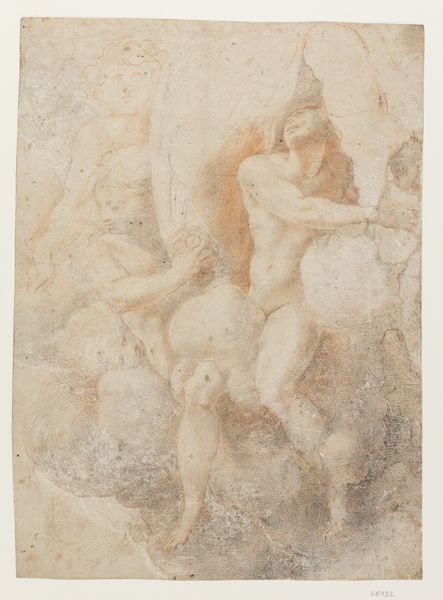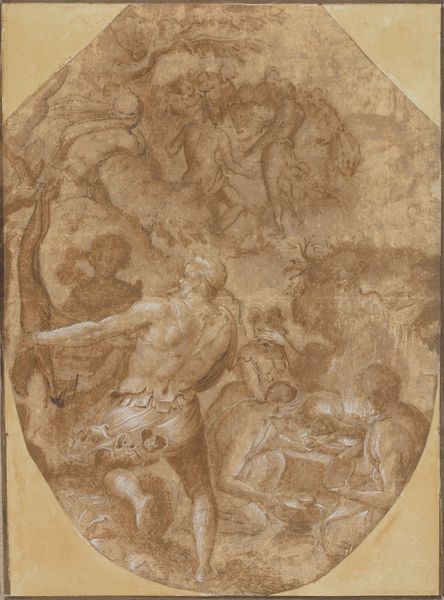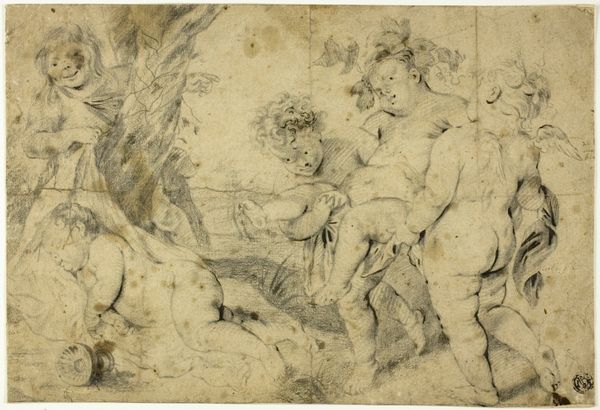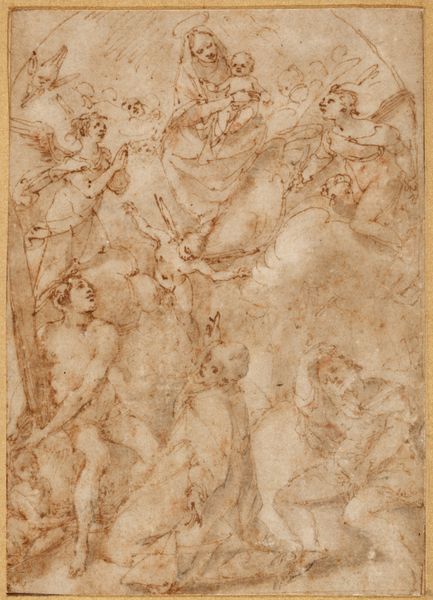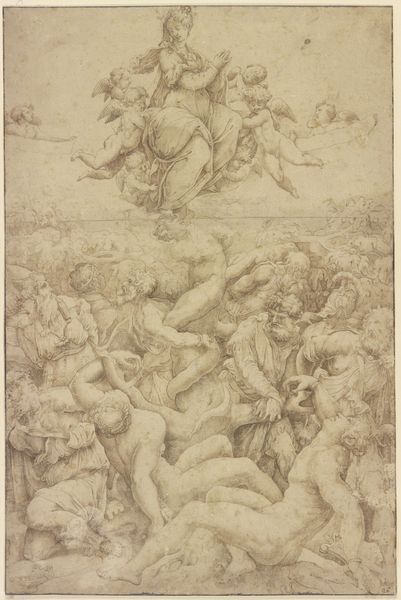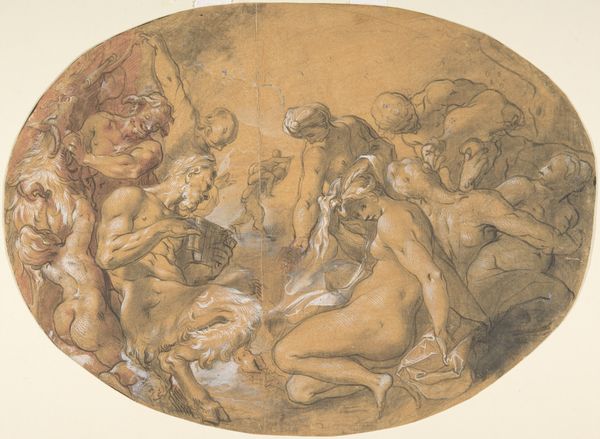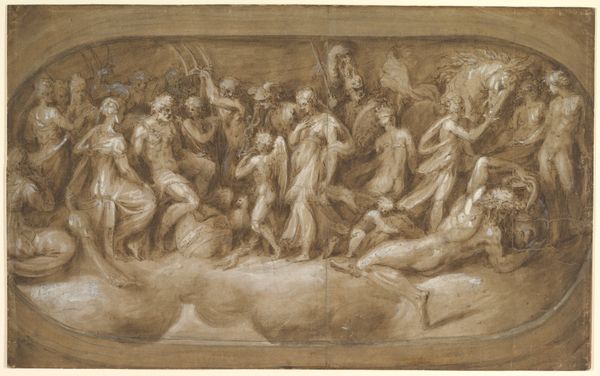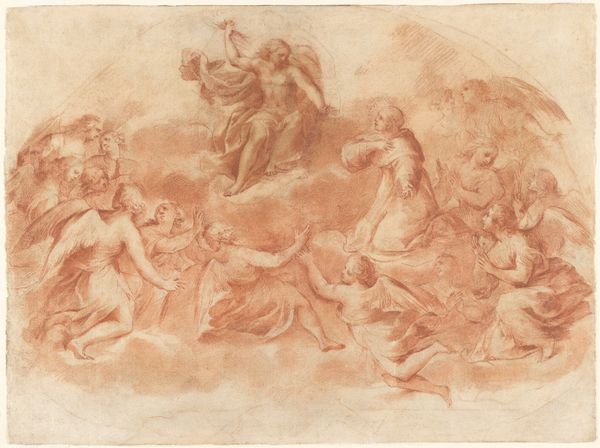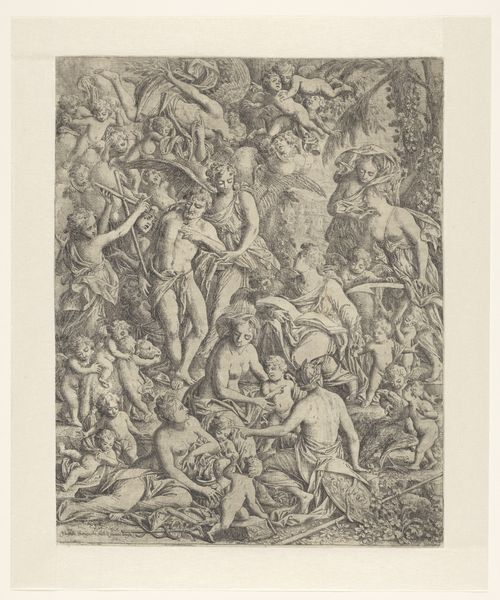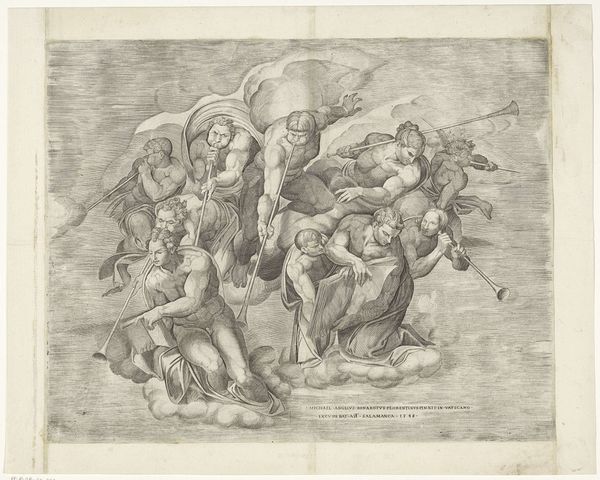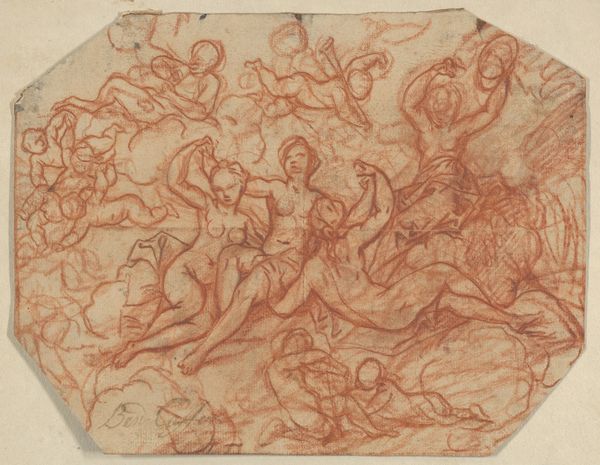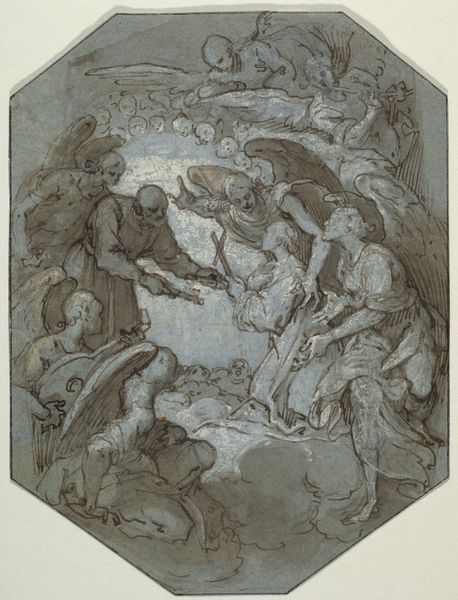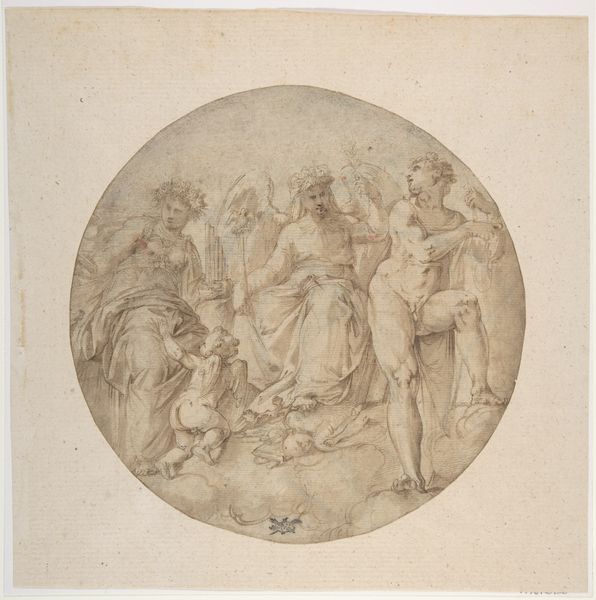
God the Father borne by angels in clouds, after the cupola at Cortemaggiore 1484 - 1539
0:00
0:00
drawing, charcoal
#
drawing
#
charcoal drawing
#
figuration
#
11_renaissance
#
group-portraits
#
charcoal
#
history-painting
#
charcoal
Dimensions: 267 mm (height) x 289 mm (width) (bladmaal)
Curator: Here we have a charcoal drawing entitled "God the Father borne by angels in clouds, after the cupola at Cortemaggiore." Though the artist is unknown, the work dates sometime between 1484 and 1539. Editor: It’s… quite something. A swirl of cherubic bodies; I find it both whimsical and overwhelming. All that fleshy innocence packed together makes me slightly uneasy. Curator: Notice how the figures cluster and ascend. Angels bear God the Father upward into a heavenly sphere. This upward movement and the positioning of the subjects absolutely convey transcendence. Editor: There’s an undeniable Eurocentric perspective at play in its vision of divinity and the idealized, frankly quite pale, human form. This isn’t just a depiction of faith, it’s reinforcing very specific cultural power structures. Curator: I would agree. Still, one cannot overlook the cupola at Cortemaggiore. These images acted as visual scripture. These angelic figures connect the earthly with the divine. Editor: Connections often obscure complexities, don't you think? Renaissance art, especially religious art, was frequently funded by patrons invested in maintaining specific societal roles. This artwork, while beautiful, served as propaganda for the cultural elite. Curator: You are seeing a world behind this one; how the image might reinforce a historical situation through visual symbolism. For me, though, it also offers a chance to step outside one’s ordinary circumstances. To connect to a collective consciousness... Editor: That sense of aspiration might appeal to those privileged enough not to worry about those ordinary circumstances. However, others could look at it differently and experience a sense of exclusion. Curator: It is so interesting how such disparate images trigger our individual experiences with iconography. Editor: Yes, examining those images is vital to fully understand what is meant, but more importantly what kind of ideology they disseminate.
Comments
No comments
Be the first to comment and join the conversation on the ultimate creative platform.
